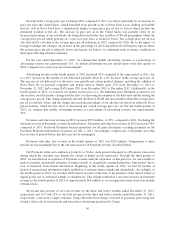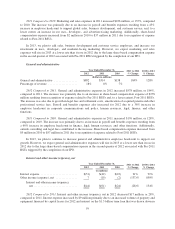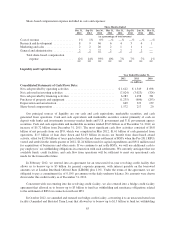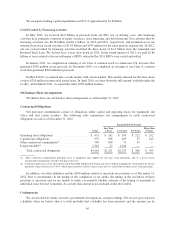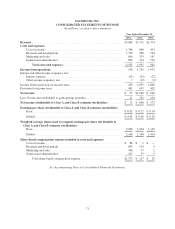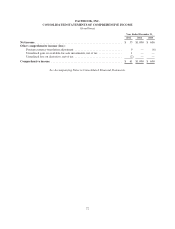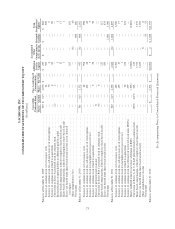Facebook 2012 Annual Report Download - page 70
Download and view the complete annual report
Please find page 70 of the 2012 Facebook annual report below. You can navigate through the pages in the report by either clicking on the pages listed below, or by using the keyword search tool below to find specific information within the annual report.reasonably estimated. Significant judgment is required to determine both probability and the estimated amount.
Such legal proceedings are inherently unpredictable and subject to significant uncertainties, some of which are
beyond our control. Should any of these estimates and assumptions change or prove to be incorrect, it could have
a material impact on our results of operations, financial position, and cash flows.
See Note 10 in the accompanying notes to our consolidated financial statements included in Part II, Item 8,
“Financial Statements and Supplementary Data” and Part I, Item 3, “Legal Proceedings” of this Annual Report
on Form 10-K for additional information regarding contingencies.
Recently Issued and Adopted Accounting Pronouncement
Comprehensive Income
In May 2011, the FASB issued guidance that changed the requirement for presenting “Comprehensive
Income” in the consolidated financial statements. The update requires an entity to present the components of
other comprehensive income either in a single continuous statement of comprehensive income or in two separate
but consecutive statements. The update is effective for fiscal years, and interim periods within those years,
beginning after December 15, 2011 and should be applied retrospectively. We adopted this new guidance on
January 1, 2012.
Goodwill Impairment Testing
In September 2011, the FASB issued an amendment to an existing accounting standard which provides
entities an option to perform a qualitative assessment to determine whether further impairment testing on
goodwill is necessary. An entity now has the option to first assess qualitative factors to determine whether it is
necessary to perform the current two-step impairment test. If an entity believes, as a result of its qualitative
assessment, that it is more-likely-than-not that the fair value of a reporting unit is less than its carrying amount,
the quantitative impairment test is required. Otherwise, no further testing is required. This standard is effective
for annual and interim goodwill impairment tests performed for fiscal years beginning after December 15, 2011.
We adopted this new standard on January 1, 2012 and the adoption did not have a material impact on our
financial statements.
Item 7A. Quantitative and Qualitative Disclosures About Market Risk
We are exposed to market risks, including changes to foreign currency exchange rates, interest rates, and
inflation.
Foreign Currency Exchange Risk
We have foreign currency risks related to our revenue and operating expenses denominated in currencies
other than the U.S. dollar, primarily the Euro. In general, we are a net receiver of currencies other than the U.S.
dollar. Accordingly, changes in exchange rates, and in particular a strengthening of the U.S. dollar, will
negatively affect our revenue and other operating results as expressed in U.S. dollars.
We have experienced and will continue to experience fluctuations in our net income as a result of
transaction gains or losses related to revaluing certain current asset and current liability balances that are
denominated in currencies other than the functional currency of the entities in which they are recorded. At this
time we do not, but in the future we may enter into derivatives or other financial instruments in an attempt to
hedge our foreign currency exchange risk. It is difficult to predict the impact hedging activities would have on
our results of operations. We recognized foreign currency losses of $9 million and $29 million for the year ended
December 31, 2012 and 2011, respectively. Foreign currency losses were not significant in 2010.
66


